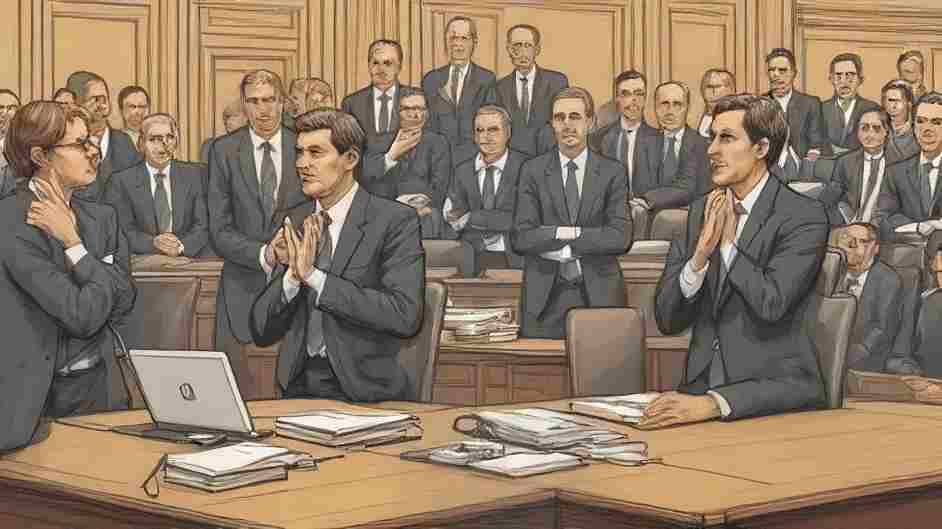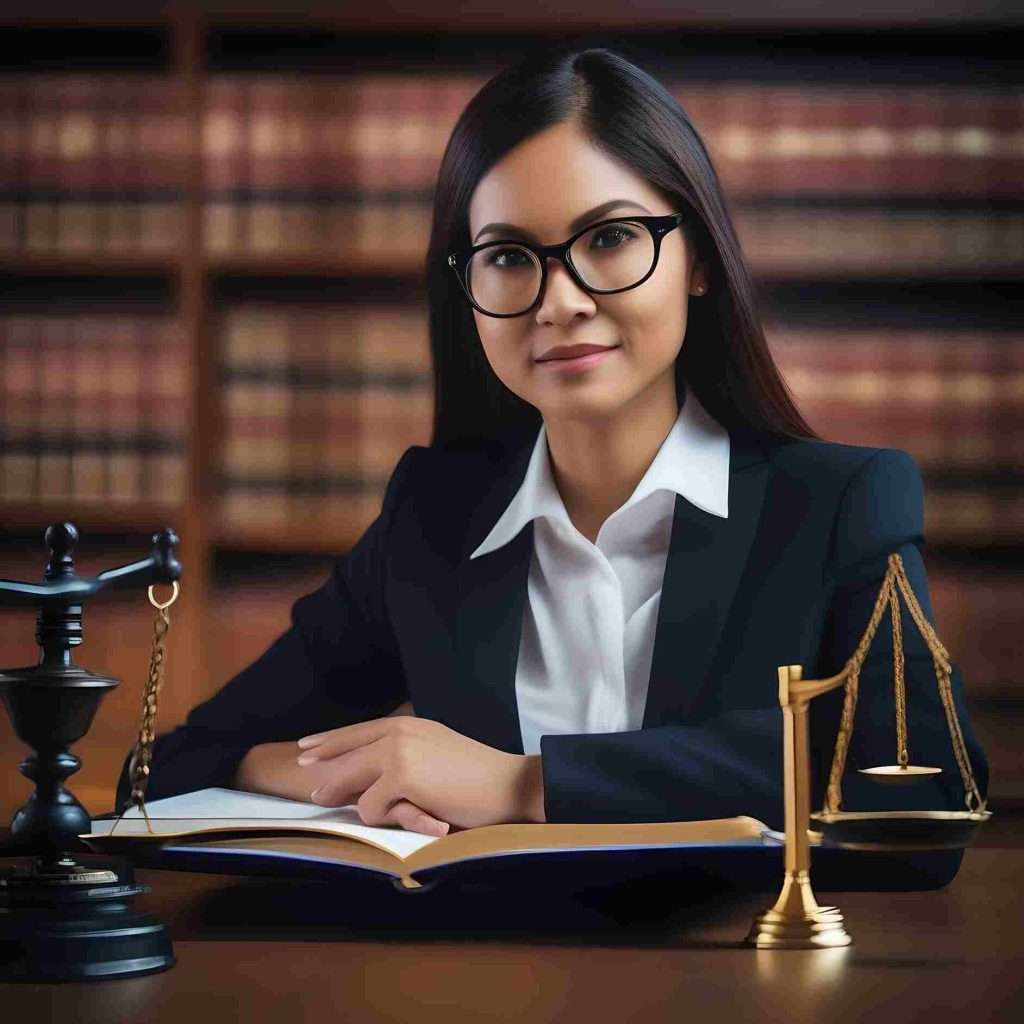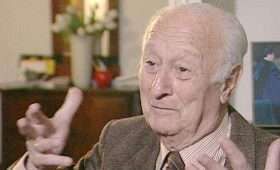How to Win in Court Using These 7 Body Language Hacks
Being well-presented is just as important to winning in court as what you say. Attorneys know that nonverbal cues may be just as compelling as spoken ones. Your movements, gestures, and body language can greatly influence the jury, the judge, and even the opposing counsel. Learning these nonverbal clues may give you the advantage you need to succeed in court. These are the seven body language strategies used by accomplished attorneys to influence the court to rule in their favor.
1. Continue to make intense eye contact

Making eye contact is one of the most effective nonverbal communication techniques. It conveys assurance, sincerity, and involvement. You may make your arguments more persuasive in court by keeping tight eye contact with the judge, jurors, and witnesses.
For Example:
Renowned trial lawyer Gerry Spence is well-known for making intense eye contact. Spence’s persistent gaze contact with the jurors throughout Imelda Marcos’ trial demonstrated his confidence in his client’s innocence. This subtle but forceful statement was a major factor in her acquittal.
Practical Advice:
Establish Eye Contact with the Jurors: Especially throughout your opening and closing remarks, make sure to look each jury in the eye when speaking to them.
Avoid Staring: Maintaining eye contact is important, but be cautious not to stare since this might come out as hostile or confrontational.
Match Eye Contact to Tone: To effectively communicate the appropriate tone, maintain softer eye contact during emotive pleas and firmer eye contact during factual arguments.
2. Adopt an open posture.

When you stand or sit with your arms and legs extended, it conveys an air of openness and sincerity. It helps you come out as more personable and reliable, which is important in persuading the jury and judge of your legitimacy.
For Example:
During his Supreme Court arguments, Thurgood Marshall frequently adopted an open stance, as shown in the famous case of Brown v. Board of Education. He effectively argued against school segregation by projecting openness and sincerity through his gestures toward the justices and by keeping his arms extended.
Practical Advice:
Arms Uncrossed: Crossing your arms might give off a closed-off or defensive vibe. Use them for organic motions or keep them at your sides in a relaxed position.
Stand Tall: Confidence and authority are projected by a tall, straight stance. Refrain from slouching or reclining since this will make you appear less credible.
Face the Jury: Try to face the jury as often as you can to establish a personal connection and personalize your case.
3. Regulate Your Expressions on the Face
Your face is an effective means of expressing feelings and responses. Jurors and judges are more inclined to believe attorneys who can regulate their facial expressions and project a confident, calm attitude.
For Example:
Facial expression management was a skill that Johnnie Cochran mastered during the O.J. Simpson trial. Cochran maintained his composure and projected serenity and control even in the face of intense scrutiny and heated exchanges. This preserved his credibility and directed the jury’s attention away from his emotional outbursts and onto his arguments.
Practical Advice:
Practice Neutral Expressions: Refrain from displaying excessive emotion, such as annoyance or shock, as this might come off as unprofessional or distracting.
Smile When Appropriately: A well-timed smile may help you come off as more likable and relatable, but too much or the wrong kind of smiling might backfire.
Mirror the Jury’s Emotions: You can establish a subconscious connection with the jury and increase their openness to your arguments by subtly imitating their facial expressions.
4. Use gestures carefully.
Though they should be used carefully and sparingly, gestures may highlight important points and help your argument stick in the minds of listeners. While under-gesturing might make you appear rigid and disinterested, over-gesturing can be distracting.
For Example:
Known for his theatrical courtroom demeanor, Clarence Darrow made great use of gestures during the Scopes Monkey Trial. He would dispute the arguments of the opposing counsel by pointing directly at them or by raising his hands to highlight key points. His body language supported his statements and made him more relatable to the jurors.
Practical Advice:
Emphasize Key Points: Use hand gestures, such as counting on your fingers to make a list of points, to draw attention to important points in your argument.
Refrain from Overmoving: Make careful and controlled motions. Excessive waving or fidgeting might detract from what you are trying to say.
Align Words with Gestures: Make sure your motions correspond with your spoken words. Gestures that contradict one another might mislead the jury and undermine your case.
5. Reflect on the jury and judge
Establishing a relationship with the judge and jury by subtle mimicry of their body language might increase their receptivity to your argument. By fostering a subconscious bond, this tactic helps your audience feel more at ease and in sync with you.
For Example:
Mirroring was one of the strategies attorney Tom Mesereau used to establish rapport with the jurors during Michael Jackson’s trial. He would ape the jurors’ stances and mannerisms, which helped them relate to him and become more open to his defense.
Practical Advice:
Be Discreet: Mirroring ought to be hardly perceptible. Excessive use of it may come out as manipulative or disingenuous.
Mirror Positive Gestures: To strengthen a relationship, concentrate on mimicking positive body language like smiling or nodding.
Adjust for the Circumstance: Adapt your mirroring to the courtroom’s atmosphere. If the mood is serious, act accordingly; if it’s more laid back, take on a more informal stance.
6. Regulate Your Motions
Your movements in the courtroom have an impact on how others see you. Attorneys who walk with control and purpose are perceived as more certain and powerful. However, unsteady or tense gestures might damage your trustworthiness.
For Example:
One of the main attorneys for the O.J. Simpson defense team, Robert Shapiro, was renowned for his collected, methodical demeanor in the courtroom. He would never rush or move abruptly; instead, he would stroll with confidence and slowness. This deliberate motion demonstrated authority and kept the jury’s attention on his points of contention.
Practical Advice:
Action with Purpose: Whether you’re walking up to the witness stand or pointing at evidence, every action you make should have a purpose. Refrain from pacing or changing needlessly.
Pause for Effect: You can highlight key points and allow the jury time to consider your case by strategically pausing.
Control Your Hands: Repetitive motions and fiddling with items can be distracting and indicate anxiety. Instead, try to avoid these behaviors.
7. Develop Your Tone and Voice
Your voice and tone play a crucial role in your nonverbal communication, even if they are not exactly body language. To persuade a jury, one must be able to communicate confidence, authority, and sincerity with a controlled voice.
For Example:
The fictional lawyer from To Kill a Mockingbird, Atticus Finch, is a good illustration of voice and tone mastery. Throughout the trial, he spoke with sincerity and calmness, which made his closing argument all the more potent and unforgettable.
Practical Advice:
Vary Your Tone: Adjust Pitch and Volume to Highlight Important Points and Maintain Juror Attention.
Talk Clearly and Slowly: Slow down when you talk, and make sure your words are well-articulated. Maintaining a steady tempo ensures that your message is absorbed and exudes confidence.
Employ Silence: You can build suspense and bring the jury’s attention to your next remarks by pausing before important points or after posing a question.
Final Thought: Succeeding Through Nonverbal Expertise
A solid legal case is not enough to win in court; one must also be an expert in nonverbal communication. You can dramatically improve your courtroom presence and persuasiveness by using these seven body language secrets: keeping strong eye contact, adopting an open posture, managing your facial expressions, using gestures wisely, mirroring the judge and jury, controlling your movements, and mastering your voice and tone.
These strategies are not limited to experienced attorneys; everyone with an interest in the court system, from witnesses to clients, may make use of them. You may improve your chances of succeeding in court, leaving a lasting impression on the judge and jury, and eventually winning your case by putting these strategies into practice.



